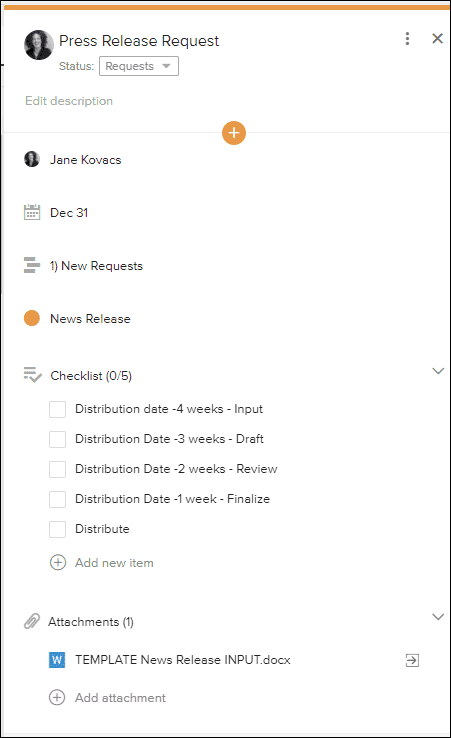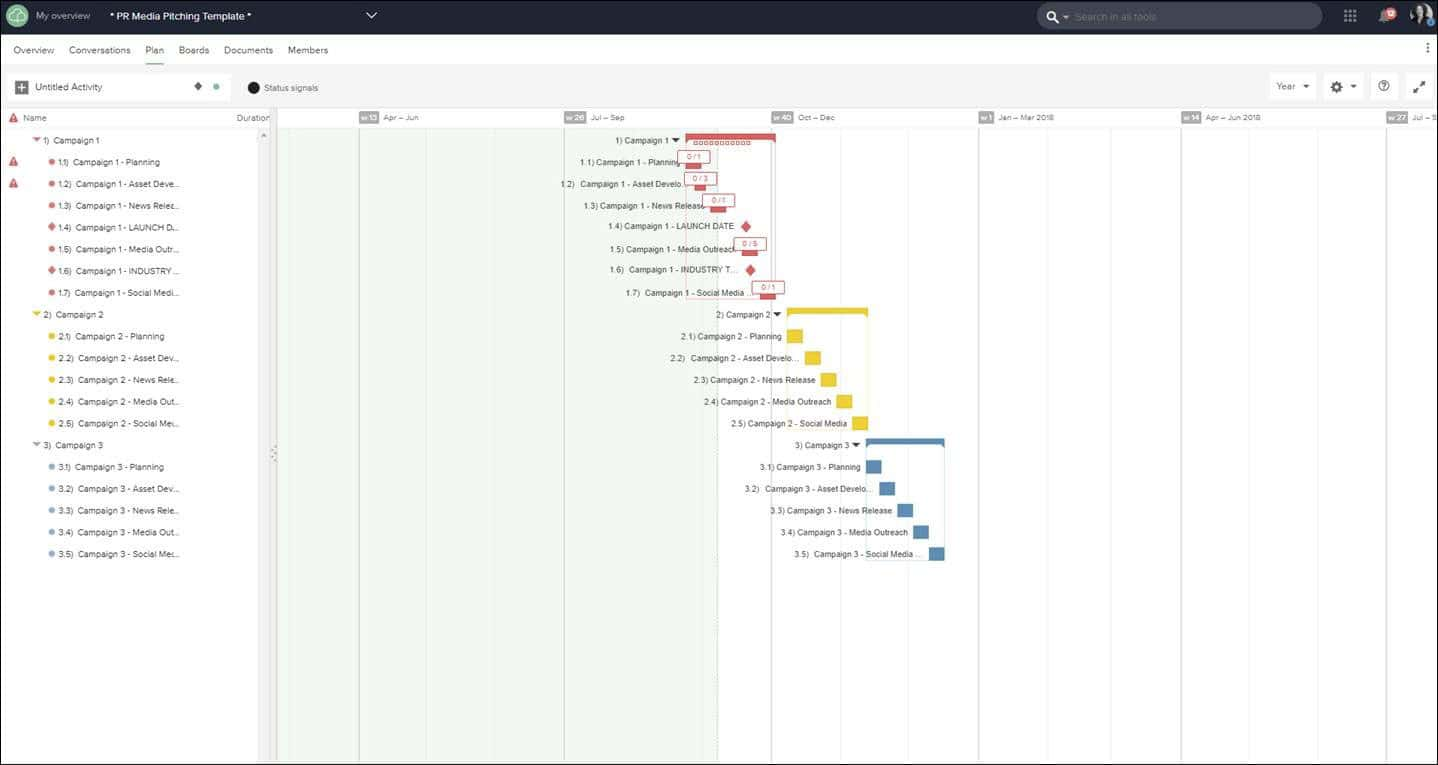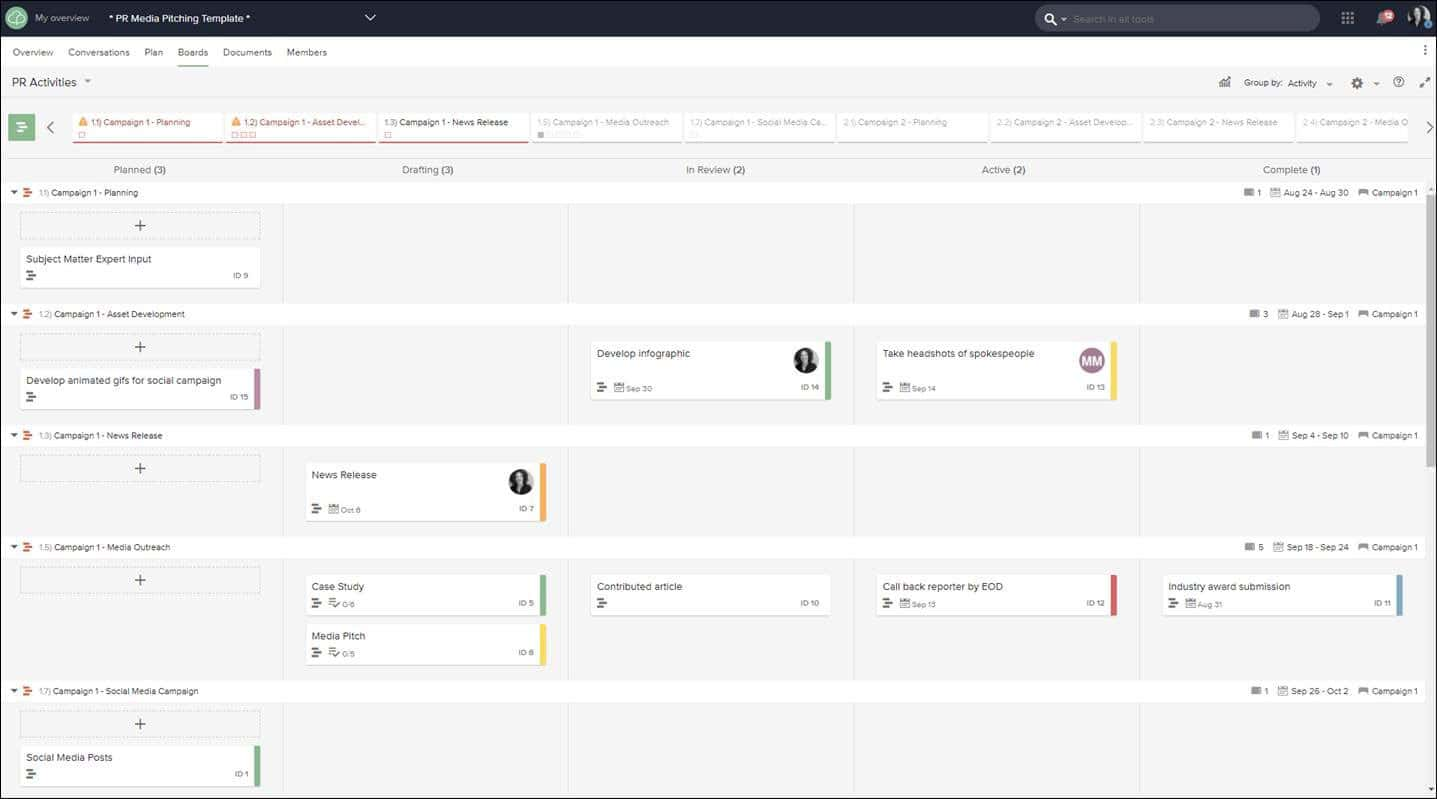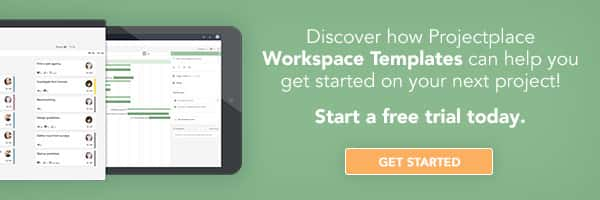
All public relations (PR) people, whether they work at an agency or on-staff with a company, must balance internal projects and expectations with external deadlines and requests, aka public relations project management. And everyone knows that in the digital age we live in, trying to manage your work day through email is a fool’s game.
I’ve often classified my job of a PR manager as “professional cat herding.” Between moving deadlines and launch milestones and tracking input from all the stakeholders I represent, I often feel like a frustrated wrangler of felines rather than a communications professional.
But my main points aren’t unique to the PR profession. Like many employees in the digital workplace, the nature of the work I do has made me an “accidental project manager.” You won’t find it in my title, but to some extent, on any given day, I am managing projects, deadlines, and expectations.
See if this sounds familiar:
- You have your official list of projects and tasks, each tied to one of your annual goals that, in turn, support your company’s overall strategy and corporate goals
- You track these in organized folders which correspond to a spreadsheet
- You may have even be ambitious enough to color-code your email and online calendar so you can “easily” track status and projects (Yes, I’ve done that.)
Email is not enough. Spreadsheets can be dumb.
At past companies, I have often relied on spreadsheets and email, even online document sharing, to track projects, but one or the other is often out of date. Or somebody loses access to the folder. The list goes on.
That spreadsheet is out of date the minute it is saved. And did you give all the right people access to it? That’s okay … you can share it via email. But wait … now that recipient has made an update to your document. Will it override your copy? And did you copy everyone on the update?
And that’s just your “official” assignments. Where do you park all the one-off requests that come in during the day … or overnight? How do you keep an eye on them? That spreadsheet doesn’t seem to be the right place, but where else will you be able to track additional tasks in context with your other assignments?
Ruh-roh. It gets real messy, real quick.
When you are managing incoming requests from media as well as the numerous deadlines associated with various articles, news releases, and other projects, it is easy to lose track of which deadline goes with which project and who has reviewed what.
What’s this ProjectPlace you speak of?
When I joined Planview in July 2016, I got access to Projectplace, our award-winning collaborative work management software. Honestly, I wasn’t sure what to expect. It seemed simple enough, but I wasn’t convinced that converting my projects into smaller tasks and putting them on cards was the solution. I mean, a process is only as good as the people who use it.
But I do like shiny new technology, so I dove in.
- I created a workspace in Projectplace.
- I created activities for my priority campaigns.
- I put milestones in the plan so I could see the big stuff coming up.
- I moved tasks, assignments, and smaller projects to cards. Each card was assigned a deadline, an owner and a label so I could easily differentiate between news releases and articles, award entries, and media pitches.
- Suddenly, I could “see” deadlines, bottlenecks, who was working on what. I could also see task owners, due dates, notes and related documents … all in one place.
- Adding external agencies to the workspace was as easy as adding their email address to the folder.

One year later, I manage all tasks related to public relations activities through Projectplace. The external PR agency I work with can easily communicate notes on tasks and projects as easily as adding a comment to a card and adding @Jane to the note. If I need to know where a project stands, I simply check that related card instead of wading through a spreadsheet or searching my email inbox.
As an added plus, that inbox is now manageable. More often than not, I can actually see the bottom of it. Mischief managed. Cats herded. Check, check, checkity check.
The advantages of ProjectPlace go beyond public relations. For any team with multiple stakeholders and structured as well as unstructured work and moving targets for deadlines (spoiler alert: that’s all of us), ProjectPlace provides one collaborative workspace to get work done. Here are the key advantages:
Ownership. ProjectPlace lets me communicate directly with task owners on specific activities. The whole team has line of sight into accountability for individual tasks. Aligning those cards and tasks to activities helps us see progress of tasks for specific campaigns.
Visibility. It’s easy to see status report because I can easily see what has been done and where the bottlenecks are. Because the cards are visible to everyone, everyone can see what’s been accomplished. We can now use the time in weekly status calls to discuss strategic issues because the logistics and other details have been captured on cards.
Standardizing processes. One of the things I like best about ProjectPlace is the checklist feature for cards. It allows me to create standardized tasks for a task without having an overwhelming number of cards. Being overwhelmed with information is almost as bad as not having that information, which is why we use ProjectPlace in the first place.
Feeling overwhelmed by tasks, deadlines, projects? Too many cats to herd? Check out the ProjectPlace Media Pitching Template to see how it’s done in Projectplace.
To learn how ProjectPlace can benefit each department in your organization, check out the following use-case blogs: Public Relations, Human Resources,Blog Management, Cross-Department Communication, Demand Generation Marketing, Event Management, Digital Marketing, Customer Renewals, RFP Project Planning, Sales Team Collaboration,Customer Experience, Solutions Marketing, and Sales Project Management.







